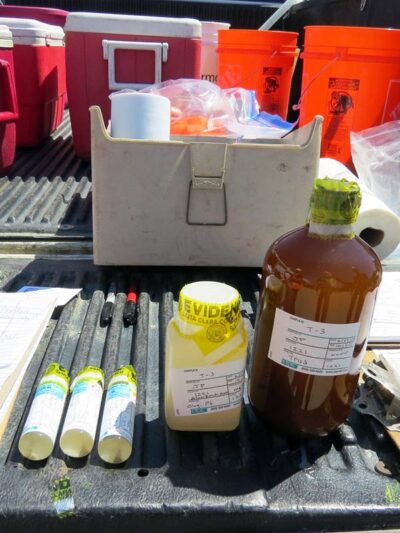Soil Liners from a Geoprobe Sample Boring[/caption]Soil sampling identifies pollutants in the ground, soil gas sampling detects volatile compounds that can travel into buildings, and groundwater sampling checks for contaminants that could impact drinking water supplies or surface water.
GRI employs fully trained, HAZWOPER-certified technicians for soil, groundwater, and soil gas sampling.
Soil Sampling
GRI technicians can collect soil samples using hand augers, or from drill rigs and excavator buckets. Soil borings are logged using the Unified Soil Classification System.
Groundwater Sampling
Groundwater samples can be collected using submersible pumps, peristaltic pumps, bladder pumps, or bailers. GRI will collaborate with regulatory agencies to design the appropriate sample plan for each site.
Soil Gas Sampling
GRI technicians are experienced in collecting active soil gas samples using isopropyl alcohol or helium tracer gases within shrouds and regularly meet Department of Toxic Substances Control limits for leak detection. GRI is also up-to-date on advances in passive soil gas samplers.
GRI can collect samples for the following:
- Total petroleum hydrocarbons as gasoline (TPHg), diesel (TPHd), motor oil (TPHmo), and others
- Volatile organic compounds (VOCs)
- Semi-volatile organic compounds (SVOCs)
- Dioxanes
- Polychlorinated biphenyls (PCBs)
- Per- and polyfluoroalkyl substances (PFAS)
- Pesticides (OCPs)
- Herbicides
- Metals (Title 22, chromium-6, etc.)
- Fixed gases (oxygen, helium, etc.)
- Groundwater indicator parameters (pH, dissolved oxygen, electrical conductivity, oxidation reduction potential, etc.)
- Others (cyanide, nitrates, sulfides, etc.)



